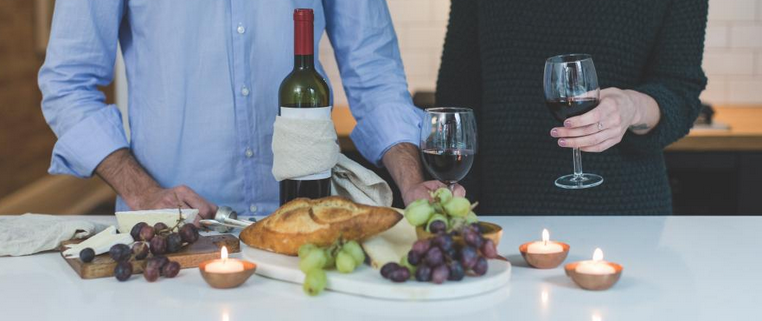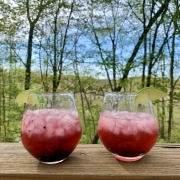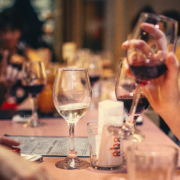Wine makers and wine drinkers love to talk about oak. And given that oak-use is incredibly complicated, it is not surprising. Oak barrel fermentation, aging in oak, the flavors that oak imparts, the amount of oxidation you get through the porous oak barrels, the type of oak that is used – American, French, Slavonian – and the size of the barrels not to mention the discussions of how the barrels are made and who makes them.
Oak barrels are made in “cooperages,” and each cooperage imparts its own unique character to its barrels. The staves are the raw materials of oak. American oak is less dense and can be cut to size. French oak, with a tighter grain, must be split. In the most traditional (aka, “best”) cooperages, the staves are left out in the weather for a few years to “condition.” A lesser cooperage will kiln dry the wood. Then the staves must be heated to bend the staves into the characteristic shape for a barrel and then roasted for the desired length of time the right amount of “toast”. The toasting of oak is very important because it determines the flavors that are imparted to the wine. More butterscotch? Less smoke? That is all a function which type of oak and of how the barrel is toasted.
- White wines tend to show more oak because the wine itself tends to have more delicate flavors and fewer tannins. The oak itself has tannins that bind with the proteins in the wine, so whites do not become more tannic with oak fermentation or aging.
- Red wines on the other hand, already have tannins that have bound with the proteins in the wine. That means that non-neutral oak generally imparts more tannins to red wines than they have naturally. So, in addition to the vanilla / caramel / butterscotch types of flavors in American oak and the more coconut / hazelnut / smoky flavors in French oak, red wines tend to become more structured in oak barrels.
Two wines that display some oak character:
The Four Foxes Chardonnay is a moderately oaky chardonnay that has had a few years in the bottle. It is a mellow wine that has notes of apple, pear and apricot with a medium amount of oak. In contrast, the Treana Chardonnay has a bolder oak character – more rounded in the mouth with riper flavors of peach, apricot and honey. The dominant flavor of “creme brûlée” is a result of the distinct character of the fairly heavily toasted oak in the wine.
The Lopez de Haro Rioja Reserva is a wonderful example of a red wine whose flavors intertwine seemlessly with oak. The Temperanillo grape loves oak and as a “reserva,” this wine spends 20 months in a combination of French and American oak, smoothing out its rough edges, aging gently and becoming absolutely delicious. The Roots Run Deep Winery’s Educated Guess Cabernet Sauvignon is the equivalent of a big, bold wine in exclusively American oak that Napa is famous for. It is a burst of black currant and black berries with a deep, caramel, vanilla and leather set of flavors that lingers on the palate.
We hope to see you at Mystic Wine Shoppe soon,
Thanks for reading – Seema











